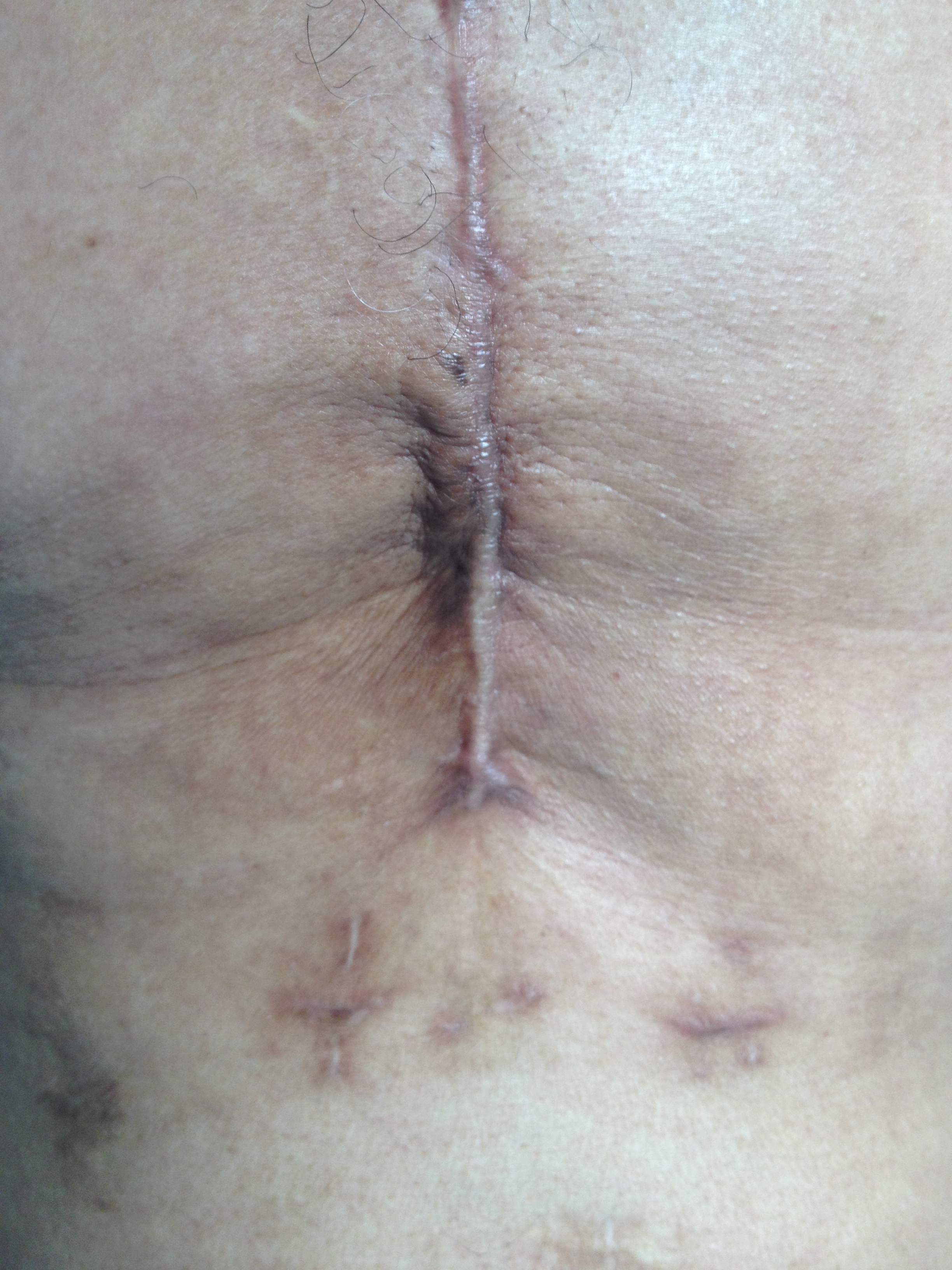[1]
Kujath P, Michelsen A. Wounds - from physiology to wound dressing. Deutsches Arzteblatt international. 2008 Mar:105(13):239-48. doi: 10.3238/arztebl.2008.0239. Epub 2008 Mar 28
[PubMed PMID: 19629204]
[2]
Wilkins RG, Unverdorben M. Wound cleaning and wound healing: a concise review. Advances in skin & wound care. 2013 Apr:26(4):160-3. doi: 10.1097/01.ASW.0000428861.26671.41. Epub
[PubMed PMID: 23507692]
Level 3 (low-level) evidence
[3]
Onyekwelu I, Yakkanti R, Protzer L, Pinkston CM, Tucker C, Seligson D. Surgical Wound Classification and Surgical Site Infections in the Orthopaedic Patient. Journal of the American Academy of Orthopaedic Surgeons. Global research & reviews. 2017 Jun:1(3):e022. doi: 10.5435/JAAOSGlobal-D-17-00022. Epub 2017 Jun 13
[PubMed PMID: 30211353]
[4]
Gorvetzian JW, Epler KE, Schrader S, Romero JM, Schrader R, Greenbaum A, McKee R. Operating room staff and surgeon documentation curriculum improves wound classification accuracy. Heliyon. 2018 Aug:4(8):e00728. doi: 10.1016/j.heliyon.2018.e00728. Epub 2018 Aug 8
[PubMed PMID: 30109278]
[5]
Levy SM, Holzmann-Pazgal G, Lally KP, Davis K, Kao LS, Tsao K. Quality check of a quality measure: surgical wound classification discrepancies impact risk-stratified surgical site infection rates in pediatric appendicitis. Journal of the American College of Surgeons. 2013 Dec:217(6):969-73. doi: 10.1016/j.jamcollsurg.2013.07.398. Epub 2013 Sep 13
[PubMed PMID: 24041560]
Level 2 (mid-level) evidence
[6]
Levy SM, Lally KP, Blakely ML, Calkins CM, Dassinger MS, Duggan E, Huang EY, Kawaguchi AL, Lopez ME, Russell RT, St Peter SD, Streck CJ, Vogel AM, Tsao K, Pediatric Surgery Research Collaborative. Surgical wound misclassification: a multicenter evaluation. Journal of the American College of Surgeons. 2015 Mar:220(3):323-9. doi: 10.1016/j.jamcollsurg.2014.11.007. Epub 2014 Nov 20
[PubMed PMID: 25532617]
[7]
Tsao K. Surgical Wound Misclassification: A Multicenter Evaluation: In Reply to Dodds and Dodds. Journal of the American College of Surgeons. 2015 Sep:221(3):781-2. doi: 10.1016/j.jamcollsurg.2015.06.005. Epub
[PubMed PMID: 26296687]
[8]
Vu LT, Nobuhara KK, Lee H, Farmer DL. Conflicts in wound classification of neonatal operations. Journal of pediatric surgery. 2009 Jun:44(6):1206-11. doi: 10.1016/j.jpedsurg.2009.02.026. Epub
[PubMed PMID: 19524742]
[9]
Scolaro JA, Agel J, Marmor M, Dumpe J, Karam M, Kellam J, Meinberg E, Munz J, Nguyen M, Soles G, Stinner D, Marecek GS. Adaptation of the Centers for Disease Control Surgical Wound Classification System for Orthopaedic Trauma Surgery. Journal of orthopaedic trauma. 2022 May 1:36(5):219-223. doi: 10.1097/BOT.0000000000002269. Epub
[PubMed PMID: 35588171]
[10]
Oyetunji TA, Gonzalez DO, Gonzalez KW, Nwomeh BC, St Peter SD. Wound classification in pediatric surgical procedures: Measured and found wanting. Journal of pediatric surgery. 2016 Jun:51(6):1014-6. doi: 10.1016/j.jpedsurg.2016.02.070. Epub 2016 Mar 2
[PubMed PMID: 26996591]
[11]
Mioton LM, Jordan SW, Hanwright PJ, Bilimoria KY, Kim JY. The Relationship between Preoperative Wound Classification and Postoperative Infection: A Multi-Institutional Analysis of 15,289 Patients. Archives of plastic surgery. 2013 Sep:40(5):522-9. doi: 10.5999/aps.2013.40.5.522. Epub 2013 Sep 13
[PubMed PMID: 24086804]
[12]
Whitehouse JD, Friedman ND, Kirkland KB, Richardson WJ, Sexton DJ. The impact of surgical-site infections following orthopedic surgery at a community hospital and a university hospital: adverse quality of life, excess length of stay, and extra cost. Infection control and hospital epidemiology. 2002 Apr:23(4):183-9
[PubMed PMID: 12002232]
Level 2 (mid-level) evidence
[13]
Harth KC, Blatnik JA, Anderson JM, Jacobs MR, Zeinali F, Rosen MJ. Effect of surgical wound classification on biologic graft performance in complex hernia repair: an experimental study. Surgery. 2013 Apr:153(4):481-92. doi: 10.1016/j.surg.2012.08.064. Epub 2012 Dec 4
[PubMed PMID: 23218885]
[14]
Waltz PK, Zuckerbraun BS. Surgical Site Infections and Associated Operative Characteristics. Surgical infections. 2017 May/Jun:18(4):447-450. doi: 10.1089/sur.2017.062. Epub 2017 Apr 27
[PubMed PMID: 28448197]
[15]
Negut I, Grumezescu V, Grumezescu AM. Treatment Strategies for Infected Wounds. Molecules (Basel, Switzerland). 2018 Sep 18:23(9):. doi: 10.3390/molecules23092392. Epub 2018 Sep 18
[PubMed PMID: 30231567]
[16]
. Improving the accuracy of surgical wound classification documentation. AORN journal. 2021 Dec:114(6):P10-P12. doi: 10.1002/aorn.13581. Epub
[PubMed PMID: 34846746]

